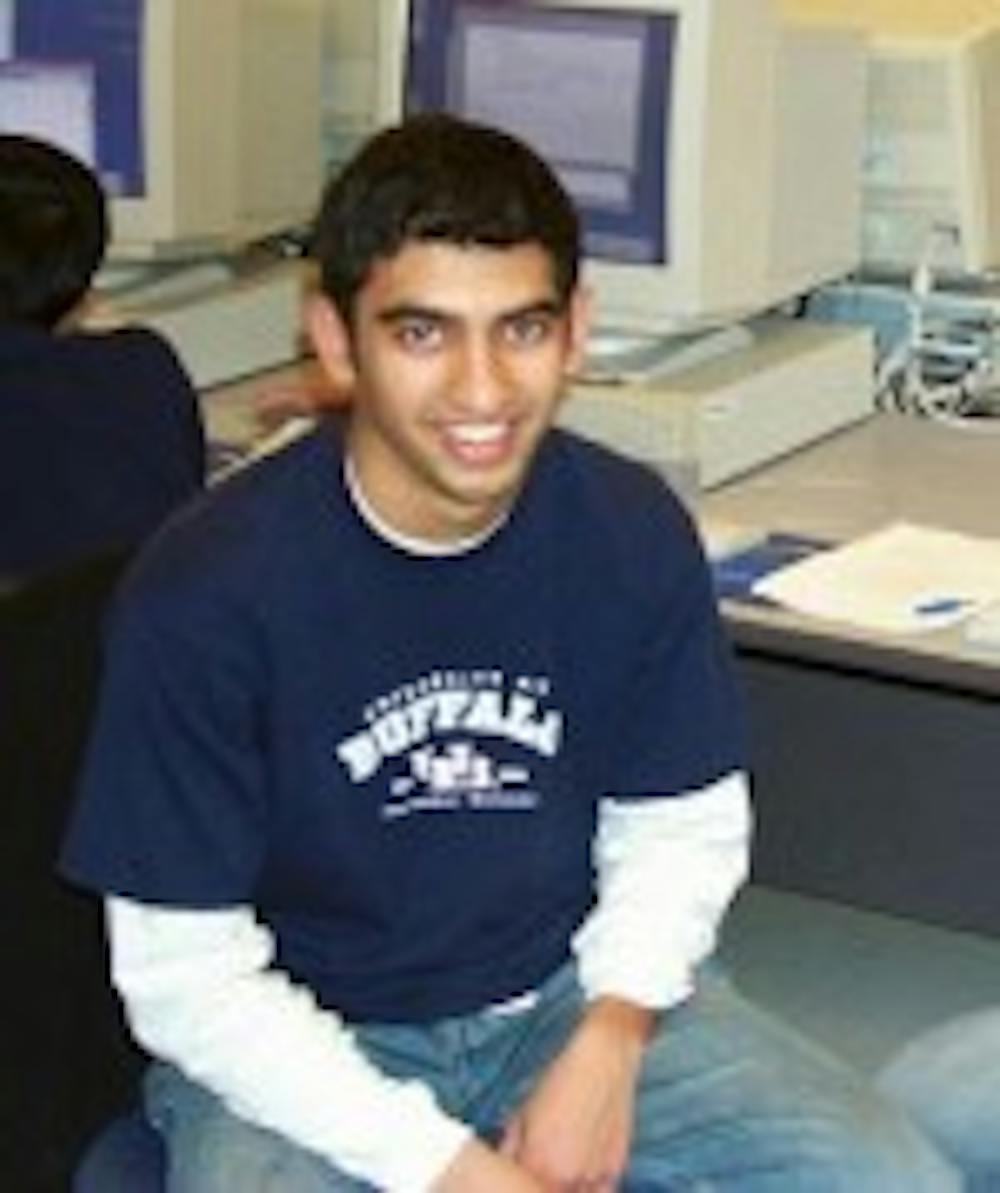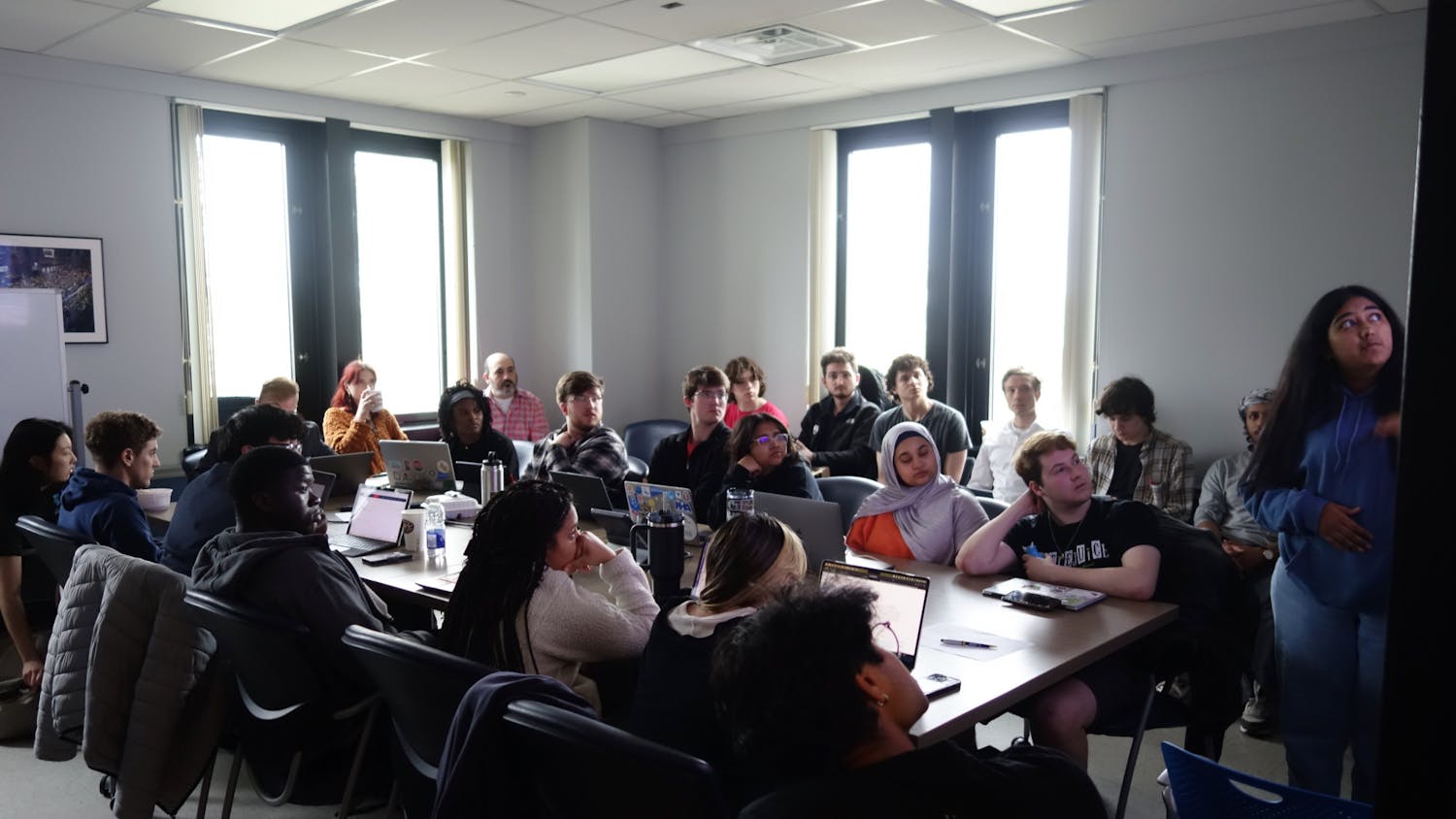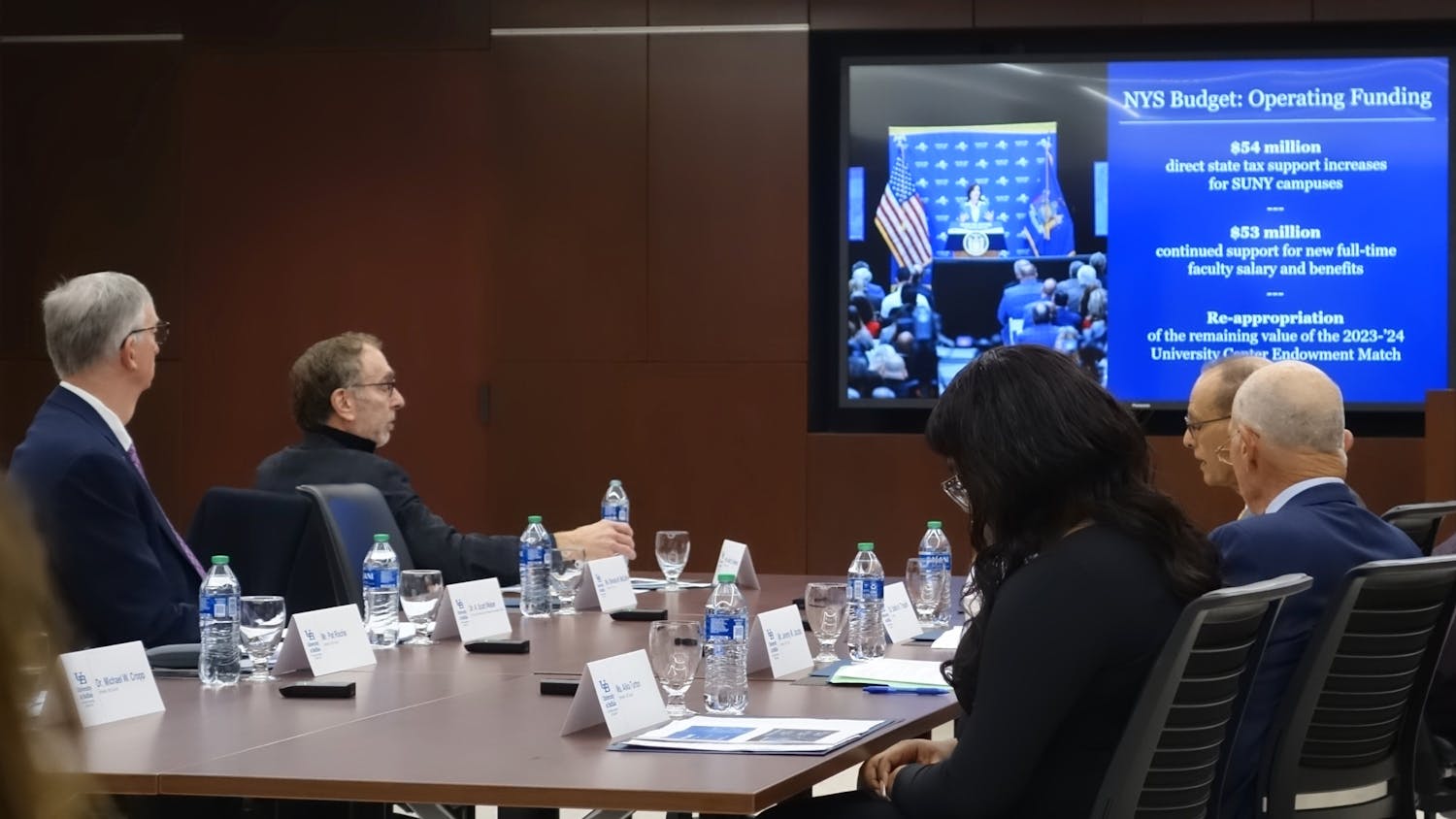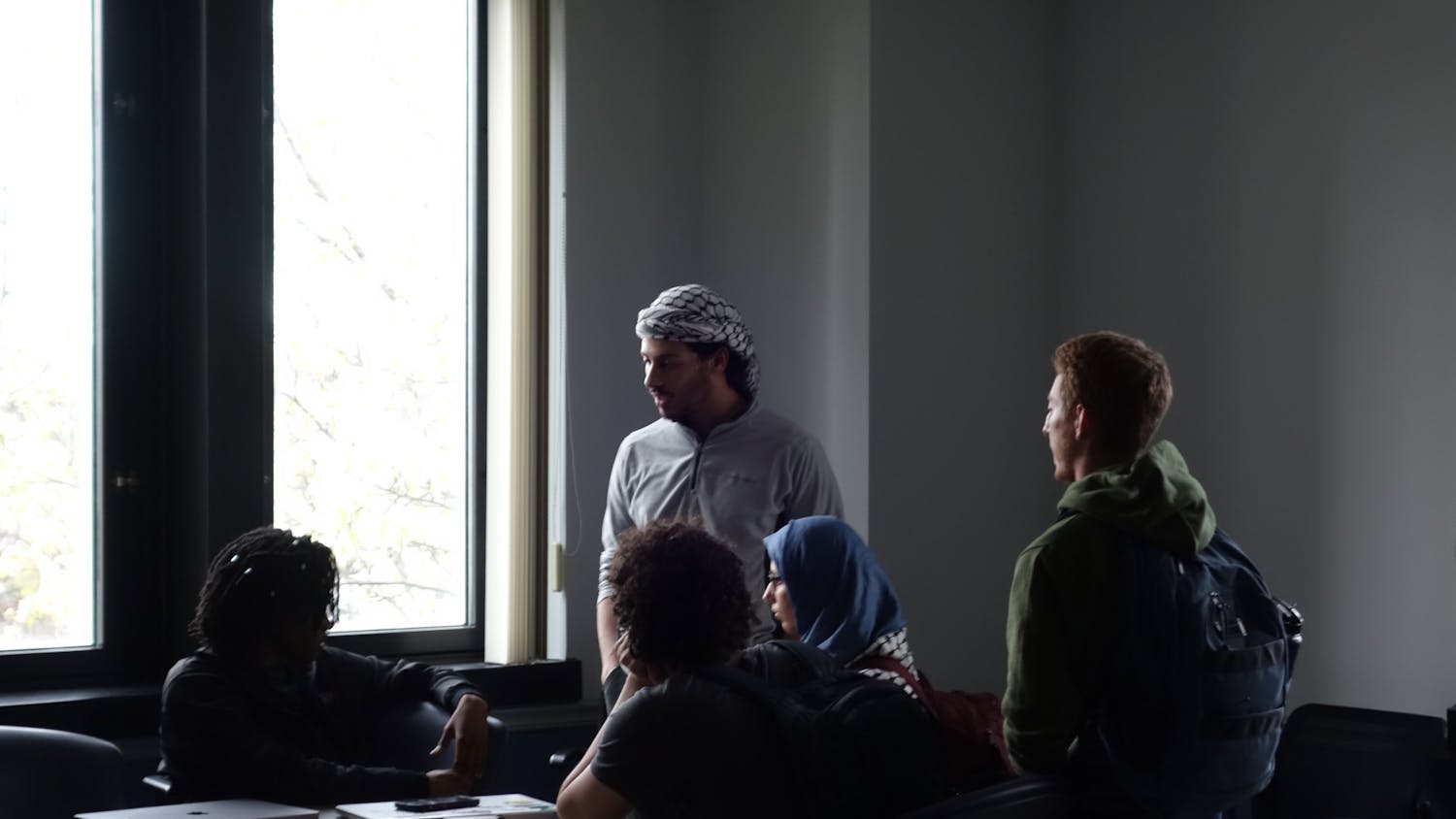In the School of Engineering, many learn early on about the "weeding out" process - those who get through their difficult programs are successful, while those who do poorly are forced to go elsewhere.
At the Faculty Senate Executive Committee meeting last Wednesday, Michael Ryan, associate dean for undergraduate education of chemical engineering, and William Wild, director of special programs for the School of Engineering and Applied Sciences, discussed the School of Engineering's "Student Excellence Initiative," aimed at recruiting higher caliber students and improving retention rates in engineering programs while maintaining their "rigor."
According to Wild, first-year student retention has increased between three and five percent since this initiative was implemented four years ago.
Wild said most students have the idea that "students are brought in, thrown up against a wall, and whoever doesn't fall out after four years - they're an engineer."
To illustrate the engineering experience, Wild displayed a picture on an overhead projector of a mountain climber attempting to scale a dangerous, snowy mountain peak.
"What makes it even worse is that the idea that the weed-out is malicious, that (the engineering program is) jerking on your rope, loading your pack with rocks and making bets down at the bottom to see what happens," Wild said. "This is not good because it changes students' perception of what's happening to them and confuses their ability to understand what's happening to them."
Mark Seiter, a senior electrical engineering major, said that though his program is difficult, he does not feel like anyone was trying to weed him out. However, he recalled his orientation as a freshman, when he was put in a room with other engineers and told to look at the people beside him.
"They said, 'Look to your left, look to your right - they're gone,'" he said.
According to Wild, the initiative focuses on a student's first two years in the engineering program, the time when many students make transitions from high school to college and need "tools" and preparation to overcome the challenges they face.
"We're also taking a look at the system and how we deliver it to make sure that the challenges they meet and (the) cliff they have to climb are real ones and necessary ones," said Wild.
The first step is to get students connected with a "peer group," said Wild, so that the students do not feel like they are alone in the transition process of having difficulties getting through their first year in the program.
"In some sense, engineers are a minority," Wild said. "When engineers are in the dorms and everyone else is building pyramids with their beer cans and going out starting Thursday night, the engineer freshman is doing his physics or his chemistry."
"Everyone looks at him or her like they have a problem, and the students look at themselves like they have a problem, saying, 'Why am I spending four hours here tonight when everyone can go out? I used to be smart, I used to just look at this stuff and get it.'"
Seiter said when he began the engineering program, he could not understand how students in other departments had an easier time handling classes in which they received the same amount of credits.
"I don't know why I get four credits for a class that has a three-hour lecture and four hour-long labs, and other people get four credits for knitting," said Seiter.
To get students connected with a peer group, the engineering school has implemented an "Opening Day" event for incoming freshmen. Students are put into groups according to who will be in their scheduled lab classes, attend seminars and engage in problem-solving activities.
"We're making them do various things until the ice breaks between them and when they walk in the room the next day . . . people are less afraid to turn to the person next to them," Wild said
At Opening Day, students also meet engineering faculty and upperclassmen who provide information on what to expect, based on their experience in the programs. Many of these faculty members will serve as mentors who will meet with students at least twice per semester during the first year.
There are currently 55 volunteer mentors. Students are assigned mentors based on their needs and the "aptitudes" of the faculty member. Students and mentors meet during opening day and are required to meet at least three times.
"What (students) lack is a reason for being," Wild said. "If you're going to have a tolerance for pain, you have to have a reason for to go through it. . We're trying to do something to show them what the light at the end of tunnel is supposed to be about and it's not necessarily a dollar sign."
According to Wild, there is "little forgiveness" in the engineering profession. If students perform poorly during their first year, there is little chance for success in the years that follow because courses are developed with the assumption the student learned things in previous years.
"The cliff is pretty steep," he said. "You need to come in and work right up through calculus and physics and chemistry, and if doesn't go well at first, nothing else will. . If you really don't catch the train the beginning, the train is gone."
The "crux of the problem," said Wild, is that engineering students arrive at the university with "unrealistic expectations" and "cannot fathom" the fact that only 30 percent of first year students will have 'B' grades.
Seiter said that in high school, it was possible to get an 'A' without having a "complete grasp of the material." He feels the weeding-out process picks out students who are "dedicated, talented or both" while the remaining students "lose their scholarship."
To assist students with making the transition from high school to college-level courses and thinking, Wild said they must know someone is there who cares about them.
"The aim is to be there when they run into trouble. Everything depends on how (students) interpret the experience," he said. "This is where they can make the accurate construction. Without someone there, they cannot do that, they do not know what hit them when they get a 30 on their first exam."
According to Wild, the No. 1 reason students leave engineering is "academic under-preparedness." In the past, the school would admit students who may not have been up to par with department standards but who showed some potential.
Admitting these students is not a wise decision, said Wild, because most students "don't let go easily" and will stay until their academic record is ruined and they have lost a significant amount of money.
"(Students are) crying in the office because their confidence is shattered. . They don't know what they can do anymore, and they don't know what's happened, and they leave pretty broken," Wild said. "If you watch the carnage, it's not a cost-free thing for the student, and it's not a better thing to give a student a shot, if it's a shot at being crushed."
To prevent this from happening, the school is turning away students who have no chance of success once they have been admitted. There are some students who meet admission requirements but may show some warning signs, such as low scores on the SAT or a Regents exam. Performance on Regents exams, said Wild, has been the best indicator thus far in predicting student preparedness and performance in the engineering school.
According to Wild, students who have shown warning signs receive a different admissions letter stating they have been accepted into the program but detailing areas in which improvement is necessary. They have the option of enrolling in small groups, which meet one hour per week, where they will examine "case studies in engineering," meet with a faculty advisor and become accustomed to college-level thinking.
Ryan said these "high risk" students are not given a label nor are they participating in a specified "program" so that they do not experience any stigmatization or reduced confidence in their abilities.
The retention on these students, said Wild, has been 20 to 30 percent higher than in previous years.
"The sense was that these programs help students achieve their potential," said Ryan.
According to Wild, "The aim is not to get into an engineering school, it's to get out of one," and a lot of schools will accept students if they can afford to attend.
Students should question the reasons they have selected engineering, he said, and if they decide it is not right for them, the school will provide career counseling and advisement as to what other programs for which they might be better suited.
"The market wants engineers, maybe someone in their family wants engineers, it would be good to be an engineer, but do I even like this? When you're not doing well, you're not having a good time," said Wild.
Another initiative is to improve the programs themselves. In the past, Wild said there have been disparities in difficulty levels in certain classes from semester to semester. The school has been working with professors to ensure that certain classes cover the same material in the fall as they do in the spring and summer and that the difficulty level is consistent.
"The climb still needs to be there," said Wild. "If you take away the challenge . . . the building falls out below us and planes fall from the sky."
From his experiences, Seiter said there is only one way to truly succeed in engineering: "Put your head down and get to work."





